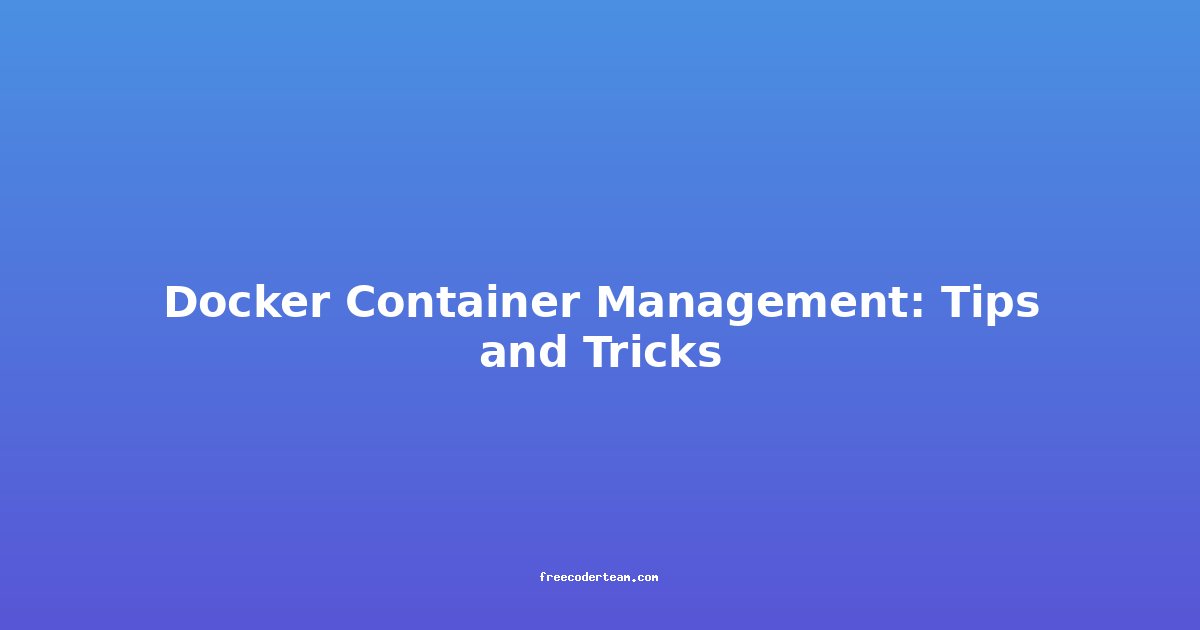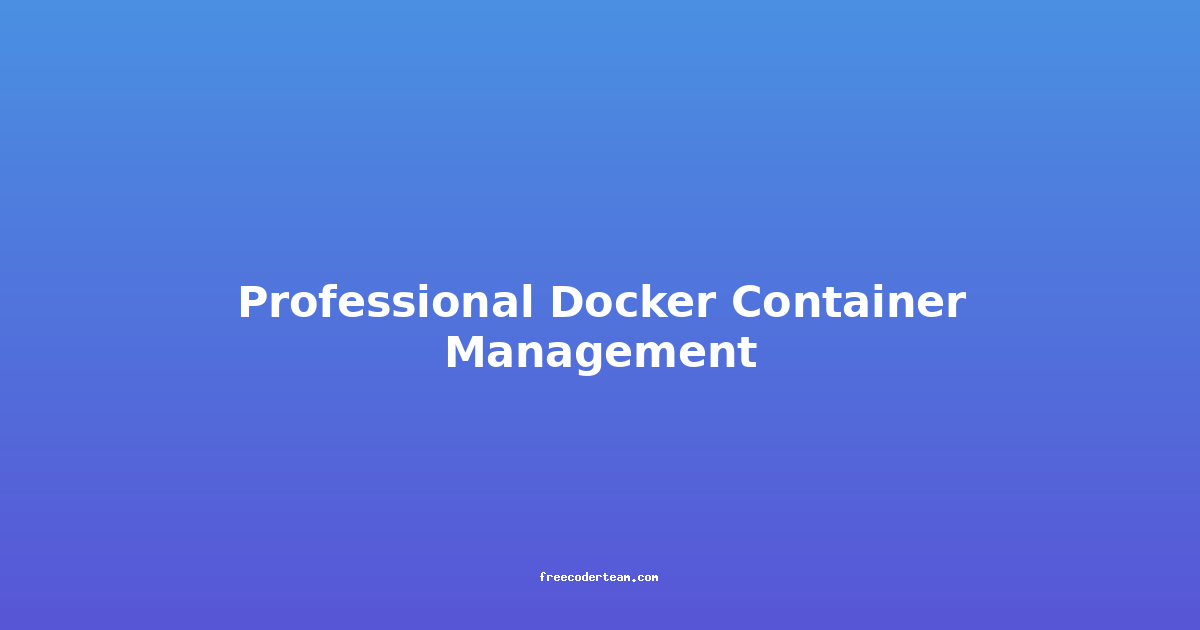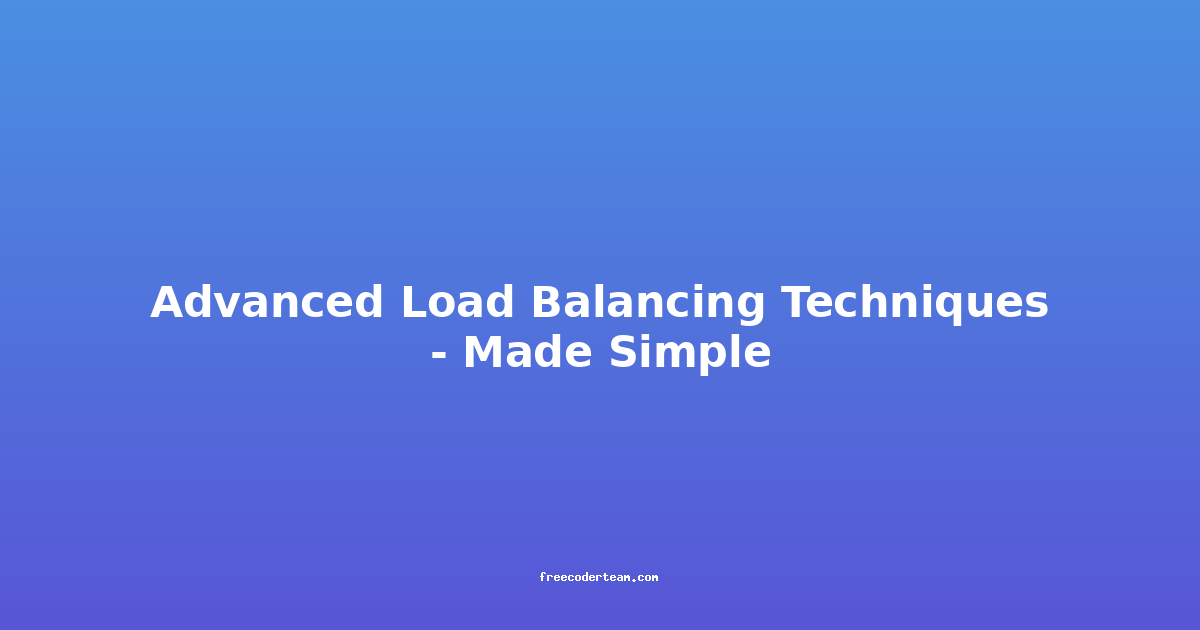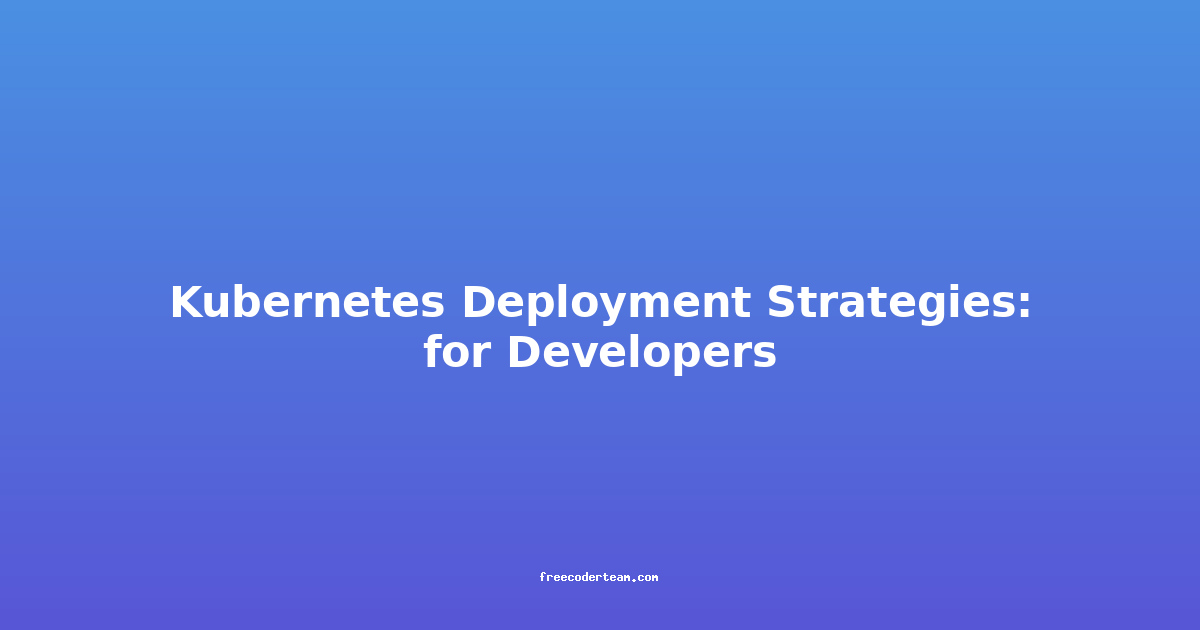Docker Container Management: Tips and Tricks for Streamlining Your Workflow
Docker has revolutionized the way we develop, deploy, and manage applications. Its containerization approach offers numerous benefits, including portability, scalability, and isolation. However, managing a fleet of Docker containers can quickly become complex as your application grows.
This blog post delves into practical tips and tricks for effectively managing your Docker containers, empowering you to streamline your workflow and maximize the advantages of this powerful technology.
1. Mastering Docker Compose: Orchestrating Your Container Ecosystem
Docker Compose is your go-to tool for defining and managing multi-container applications. It allows you to define services, their dependencies, and configurations within a single YAML file, simplifying the process of deploying and scaling your applications.
Practical Example:
Let's imagine you're building a web application with a frontend, backend, and database. Here's a simple docker-compose.yaml file:
version: "3.7"
services:
web:
build: .
ports:
- "80:80"
depends_on:
- database
database:
image: mysql:latest
environment:
MYSQL_ROOT_PASSWORD: secret
This configuration defines two services: web and database. web is built from the current directory and exposes port 80. database uses the official MySQL image and sets a root password.
Best Practices:
- Version Control: Store your
docker-compose.yamlfile in version control to track changes and ensure consistency across environments. - Environment Variables: Leverage environment variables to configure your services dynamically, separating configuration from your codebase.
- Networks: Define custom networks to connect your containers, allowing them to communicate securely within your application.
Actionable Insights:
- Explore advanced Compose features like service discovery, volume management, and health checks to enhance your application's reliability and scalability.
2. Orchestration with Kubernetes: Scaling Beyond Limits
Kubernetes (k8s) takes container orchestration to the next level. This powerful open-source platform automates container deployment, scaling, and management across a cluster of machines.
Practical Example:
A Kubernetes deployment file (deployment.yaml) might look like this:
apiVersion: apps/v1
kind: Deployment
metadata:
name: my-web-app
spec:
replicas: 3
selector:
matchLabels:
app: my-web-app
template:
metadata:
labels:
app: my-web-app
spec:
containers:
- name: my-web-app
image: my-web-app:latest
This defines a deployment named my-web-app with 3 replicas. Each container runs the my-web-app:latest image and is labeled as app: my-web-app.
Best Practices:
- Resource Quotas: Set resource limits (CPU, memory) for your deployments to prevent resource contention and ensure application stability.
- Service Discovery: Utilize Kubernetes services to provide a stable endpoint for accessing your application, regardless of container restarts or scaling.
- Rolling Updates: Leverage Kubernetes' rolling update capabilities to deploy new versions of your application with minimal downtime.
Actionable Insights:
- Explore Kubernetes namespaces to isolate deployments and resources for different teams or projects.
- Dive into Kubernetes monitoring and logging tools to gain insights into your application's performance and identify potential issues.
3. Image Optimization: Lightweight and Efficient
Efficient container images are crucial for minimizing resource consumption and improving deployment speeds.
Practical Examples:
- Multi-stage Builds: Utilize multi-stage Docker builds to create slimmer images by separating build dependencies from runtime requirements.
- Image Scanning: Regularly scan your images for vulnerabilities using tools like Clair or Trivy to ensure security and compliance.
Best Practices:
- Base Images: Choose lightweight base images whenever possible, opting for official images from reputable sources.
- Layer Pruning: Remove unnecessary layers from your images using tools like
docker pruneto reduce their size.
Actionable Insights:
- Explore container image registries like Docker Hub and Google Container Registry to find optimized base images for your specific needs.
4. Automation: Streamlining Your Workflow
Automating repetitive tasks can significantly improve your container management workflow.
Practical Examples:
- Continuous Integration/Continuous Delivery (CI/CD): Integrate Docker into your CI/CD pipeline to automate the building, testing, and deployment of your containerized applications.
- Infrastructure as Code (IaC): Utilize tools like Terraform or Ansible to define and manage your container infrastructure declaratively.
Best Practices:
- Versioning: Use version control for your infrastructure configurations to track changes and ensure reproducibility.
- Testing: Implement robust testing strategies for your containerized applications and infrastructure to catch issues early.
Actionable Insights:
- Explore build automation tools like Jenkins, GitLab CI, or CircleCI to streamline your container deployment process.
Conclusion
Mastering Docker container management is essential for developers and DevOps professionals alike. By leveraging best practices, exploring advanced features, and embracing automation, you can streamline your workflow, optimize resource utilization, and enhance the reliability and scalability of your containerized applications.




